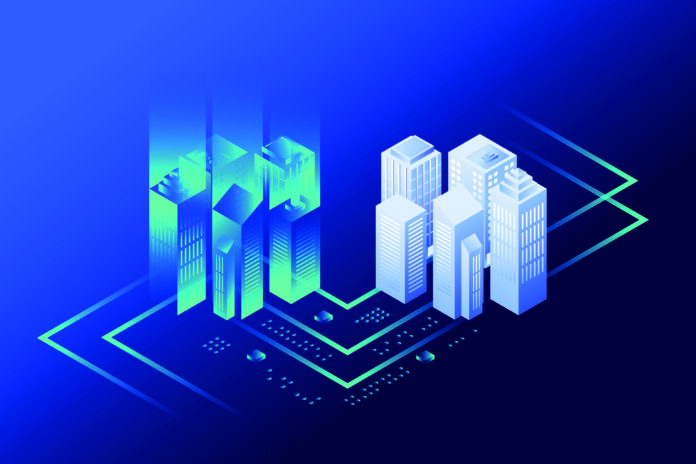
Leading experts came together at IWA’s 2024 Digital Water Summit to learn how digitalisation is shaping innovations in water management. Samuela Guida highlights some of the key presentations that captured delegates at this world-leading event.
IWA’s 2024 Digital Water Summit (DWS) was held in Bilbao, Spain, on 12-14 November. This third edition was a pivotal event that saw digital twins (DTs) emerge as a central theme, reflecting their growing influence in the revolution of global water management.
In recent years, the water sector has witnessed an explosion of digital tools, from Building Information Modelling (BIM) to DTs, transforming how utilities and industries manage water systems. However, keeping pace with these rapid developments requires collaboration, and events such as the DWS provide a crucial platform for experts, utilities and technology providers to come together, exchange knowledge and address the sector’s most pressing challenges.
Digital water solutions, particularly DTs, are increasingly recognised as essential to tackling global water needs, allowing water professionals to visualise and quantify challenges, optimise water resource management, reduce carbon emissions, and enhance wastewater treatment. By integrating real-time monitoring, artificial intelligence (AI) and machine learning (ML) techniques, DTs enable more precise control over water environments, supporting more sustainable and resilient water systems.
Demystifying the digital journey
Several technical presentations made at the summit dived into the topic of DTs. An important presentation, with the cryptic title of ‘Shedding Light on the Trees in the Forest of Digital Tools’, was delivered by Wim Audenaert, from AM-Team, Belgium. This focused on demystifying the concepts behind DTs and clarified the differences between knowledge-driven and data-driven models, with the aim of helping industry professionals understand how these frameworks function and where they can be applied most effectively. As the sector continues to embrace digital transformation, this session played a critical role in equipping participants with the knowledge to navigate the evolving digital landscape.
Digital optimisation
Another standout presentation was ‘Next-Gen Water Management: Case Studies in Computer Vision & Digital Twins’, delivered by Sergi Baena Miret and Carlos Carmona Vázquez, from Cetaqua Barcelona, Spain. This session explored how Aigu¨es de Barcelona is leveraging DTs and AI to enhance water management through its digital laboratory initiative. The presentation highlighted two real-world applications where DTs have been successfully integrated to improve process monitoring and enable the early detection of problems in wastewater and drinking water treatment plants. By showcasing how these technologies predict water quality issues and optimise asset management, this presentation provided a clear demonstration of the tangible benefits DTs offer in improving operational efficiency and sustainability.
DTs also featured prominently in discussions concerning climate goals. In particular, in the presentation by James Ballard, from Severn Trent Water, and Jeremy Black, from AtkinsRéalis, both based in the UK, titled ‘Net Zero – Do Digital Twins Have a Role to Play?’. As the water sector strives to achieve net zero, there is a growing push to integrate low-carbon technologies across wastewater infrastructure. This presentation discussed how DTs can model entire water systems to assess carbon performance, optimise operations, and balance emissions reduction with operational costs and regulatory compliance. These insights underscored the critical role of DTs in shaping a more sustainable and cost-effective approach to wastewater management.
Abi Croutear-Foy, from AquaWatch Solutions, New Zealand, took a practical approach in her presentation, titled ‘Practicality in Innovation: Digital Twins of Waterways for Effective and Fast Improvement’. She emphasised how DTs powered by real-time data provide immediate insights into water conditions, allowing utilities to respond proactively to emerging issues. Rather than focusing purely on innovation, her session illustrated how DTs serve as essential tools for day-to-day decision-making, improving water quality and long-term resource management.
Melissa Parot, from Suez, France, and Guillaume Rondot, from Optimatics, UK, expanded on the practical applications of DTs in their presentation titled ‘Suez Digital Twins: Actionable Insights Connecting Long-Term Strategy with Daily Operations to Drive Real-World Decisions’. They demonstrated how Suez employs DTs, combined with a geographic information system (GIS), hydraulic models and real-time data, to help utilities optimise network performance, detect leaks and make informed investment decisions. By presenting case studies on clean water network maintenance and flood prevention, they showcased how DTs are bridging the gap between strategic planning and daily operations.
Finally, Nikhilesh Kumar, from Vassar Labs, India, presented ‘Digital Platform for Driving Climate Resilient Water Security’, which showcased aquaWISE, a cloud-based platform that integrates the Internet of Things (IoT), AI and ML, satellite data, and DTs. His session focused on how this platform supports utilities and policymakers in optimising reservoir operations, reducing non-revenue water, and improving regulatory compliance. By offering a data-driven approach to climate resilience, aquaWISE exemplifies how DTs can play a crucial role in enhancing water security and sustainability.
Showcasing innovation
The success of the 2024 DWS was reflected in the overwhelmingly positive feedback from participants. In the post-event survey, 95% of respondents reported being satisfied to extremely satisfied with the event, highlighting the high quality of discussions, the relevance of topics covered, and the invaluable networking opportunities provided. The summit not only reinforced the transformative potential of DTs, but also demonstrated the industry’s eagerness to embrace digital solutions. Through expert-led discussions and real-world case studies, the event showcased how DTs are revolutionising water management, making operations more efficient, sustainable and resilient. By bringing together utilities, technology providers and thought leaders, the summit facilitated vital collaboration and knowledge exchange, ensuring that innovation continues to drive progress in tackling global water challenges.
The author: Samuela Guida is IWA’s Strategic Programmes and Engagement Manager
IWA’s Digital Water Programme
IWA’s Digital Water Programme promotes dialogue on digitalisation in the water sector, providing a platform for water utilities to share experiences of their digital transformation journey.
The programme serves water utilities in several ways depending on their digital maturity:
- As a starting point to initiate dialogue on digital water
- As a mechanism for learning about the application of digital solutions
- As a platform to share experiences on digital transformation in the water sector.
Be part of the digital transformation
IWA members can join the IWA Digital Water Group on the Connect Plus membership platform (connectplus.org) and contribute to innovation, knowledge and best practices around digitalisation. Add to the discussion by sharing case studies, writing blogs, producing videos and podcasts, or proposing ideas for webinars and white papers.







